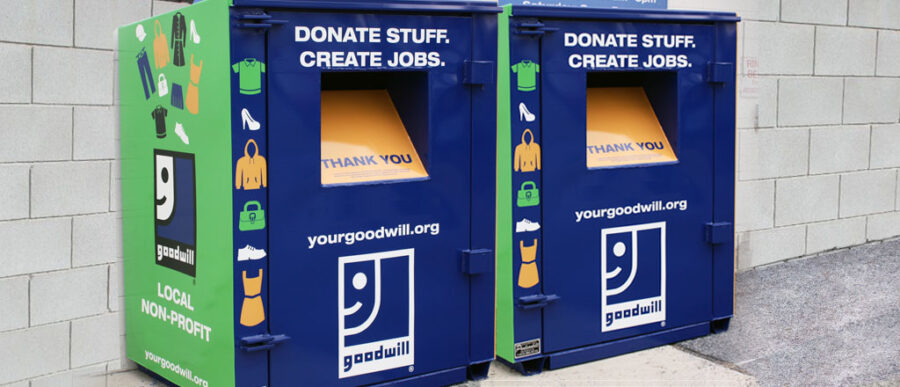In the years since the financial crash, plenty of nonprofits have struggled as giving shrank and need increased. Even with the economy in recovery, many charitable organizations are still limping. But if you’d like to see a model under which a not-for-profit can thrive despite the challenges and an ever-shifting landscape, look no further than Goodwill Industries International.
Recently, Sherryl Kuhlman, managing director of the Wharton Social Impact Initiative, interviewed Jim Gibbons, president and CEO of Goodwill Industries International, to talk about the successful hybrid model it uses for its operation, how it meshes community impact with corporate partnerships, and the organization’s deeper human missions, which involve far more than making a profit at its ubiquitous thrift stores.
An edited transcript of the conversation appears below.
Sherryl Kuhlman: Goodwill is one of those highly recognized brands. You have been around a while doing great work, but why don’t you tell us a little bit about the core of your work. Because I think a lot of people may know the name more than they understand what your business is.
Jim Gibbons: [Goodwill is] a household name. There are more than 3,200 Goodwill stores throughout communities all over the place. And a lot of people do know the mission. More importantly, they know that it is a brand that they can trust. But our real focus is not the thrift industry; our focus really revolves around job creation, job training, and working with individuals and families, so that they can achieve their own personal economic success.
Kuhlman: I think that’s an interesting point, because I think for most people, they’re aware of Goodwill’s thrift stores, and they see them as an end in themselves — they make the charity money. Talk about how the stores help in your mission.
Gibbons: Well, it’s really two fold. We have this network of Goodwill stores, and each is a community-based organization that provides a wide range of other community services. But the retail store model serves two functions. One, that entire business infrastructure, to the tune of about $4 billion, is fully leveraged to create job opportunities for people with disadvantaging conditions. So it could be transitional employment, it could be first-time job opportunities, it could be job training programs. But really, we’re working to create an inclusive work environment so that individuals with barriers to employment get a shot. And we’re just as happy when we have a talented team member leave us for a new, bigger, better opportunity, as we are to have them on the team in the first place.
“Our real focus is not the thrift industry; our focus really revolves around job creation, job training.”
Secondly, if those Goodwill stores are run successfully — and they are for the most part — all of the earnings before incremental mission activity are then plowed back into that community for other programs and services to sustain that organization, and to meet the specific needs of the community.
Kuhlman: You mentioned the word “sustainability.” I know many social enterprises, either for profit or nonprofit, are really are trying to focus on that. Your thrift stores provide a really successful example of how that happens.
Gibbons: Yes, we are fortunate in many ways that the model has been able to create resources to support and fund some incremental growth. But still, capital is always difficult to come by for anybody in the not-for-profit space. We have an innovative initiative called the Goodwill Job Creation Fund right now that has been launched by Goodwill Industries International in partnership with three founding investors — the Kresge Foundation, the Casey Foundation, and the Ford Foundation — and what’s really exciting about it is that it’s a loan fund to Goodwill locations to build out the social enterprise. But its measure of success certainly calls for repayment of the loans, which happens 100% of the time, but more importantly has a social-impact-oriented scorecard so that we can connect the dots between the economic or capital outlay, and the social impact that is derived from that specific investment.
Kuhlman: So if I am a CEO of my local Goodwill and I want to expand a store, I can go to this fund and get money to invest in doing that?
Gibbons: Correct. So for expansion, we currently have one kind of product offering in the mix, and we’re looking to expand that because right now we have not fully demonstrated the sustainability of this process. It is working economically, but is it going to bring enough value from a capitalization perspective to make it sustainable? But we are very optimistic about it, and it looks as if the model is going to work really well.
Kuhlman: Are you loaning money out yet?
Gibbons: We are. We started with about a $10 million initial round, and almost the entire amount has been committed at this point. You know, the most interesting thing about this whole sector is, when you have levels of economic stability, you can actually focus on the community needs, and then put plans in place to meet them. That is really the key to a social enterprise model, or a sustainability model.
Kuhlman: It’s impossible to overstate how important that is, because many nonprofits lack that kind of stability, and they are really scraping by each year. So any time you can get some stability, and get some vision in to the future, you are able to do things a lot more effectively.
Gibbons: Yeah. Interestingly enough, our founder from 1902 [the Rev. Edgar J. Helms], many of the words he said in his time are words we are using today, whether we’re talking about the importance of reclaiming the value of both lives and things, or this notion of being dissatisfied with the status quo. He was really quite an environmentalist then, too, and we are really connecting the dots between our model and environmental impact now as well.
Kuhlman: In the vein of not being satisfied with the status quo, how does an organization like yours both protect the brand and get innovation going? How do you get new ideas happening? Are you a top down kind of guy?
“We’re just as happy when we have a talented team member leave us for a new, bigger, better opportunity, as we are to have them on the team in the first place.”
Gibbons: Well, there are moments that it would be nice to be top down, but we are not. We actually are designed and structured as a networked organization of 165 independent, community-based organizations in the United States and Canada, and then 14 other countries. But what that actually results in is 165-plus innovation labs — test laboratories, where Goodwills try new things, and if they work, we will share. Then, it’s really about rapid replication. Innovate and replicate. There has never been a replication where you don’t have to customize that innovation to your community needs, because we are in the human services business. You have got to make it work in your community. The other thing is, we have to have a real open mind for self-disruption right now.
Kuhlman: The words business students love.
Gibbons: Yes, well, the competitive landscape, technology and new markets, all are things that we are staying right on top of. [For example] Is eBay a disruptor to the Goodwill model? Probably. But Goodwill embraced that, and we have not only a great partnership with eBay, but we also have a Shop Goodwill auction site that has grown rapidly over these last several years. So embracing those disruptions is really key to everything that we try to do.
Kuhlman: When you are thinking about how you are going to self-disrupt and respond to disruption, what role do corporate partnerships play in your choices?
Gibbons: Corporate partnerships are really important — both from a cause marketing perspective and building the brand, but also for acquiring resources and energy within communities. As corporations are trying to build more substance, they’re moving beyond the PR component of corporate social responsibility and really trying to have an impact with the investment they make. Whether that is economic or talent, or their own team members’ volunteerism, they want to know that they are having an impact. So, for Goodwill, we have a model that allows our partners to have great employee engagement, have a great cause and at the end of the day, benefit an entire community by strengthening the workforce of the area those corporate partners operate in.
Kuhlman: Let’s turn to human resources, because as those of us who have worked in the nonprofit sector know there is always tension around wanting to get really great employees, and wanting to give them a career path. You want to have them find a way to not just be good in the job they have, but to be groomed for the next job. How do you think Goodwill — and the nonprofit sector in general — can get better at doing that?
Gibbons: I think talent acquisition in the not-for-profit space is a top three challenge. So acquiring top talent is an area that everybody across the sector has to pay attention to. What try to bring in talent at Goodwill Industries International by creating a culture that people want to be a part of…. We really want to hire people who want to engage and bring their talents, their skills, and their willingness to work hard to make a difference. If a person brings the mindset of ‘I’m just doing a favor,’ they’re probably not a great teammate. But if you have a mindset of working hard, and bringing your full intellectual and work ethic fortitude forward, then you will probably work really well in our culture. And we try to be very excited, and clear about the kind of work that we do, and the kind of culture that we try to create, and hold each other accountable for.
“What that actually results in is 165-plus innovation labs — test laboratories, where Goodwill tries new things, and if they work, we will share.”
Kuhlman: Are you able to work with the local affiliates? Do you promote people up through the local affiliate to the international organization?
Gibbons: I haven’t actually benchmarked it, but across our type of nationally networked organizations, we probably have one of the more comprehensive leadership development and management training programs. We have management training that we use to “train the trainers.” With local affiliates, to help their workforce grow, we have a social enterprise certificate program so that all employees have an opportunity to build a stackable credential. We have Retail 101 “train the trainer” programs. But most excitingly, we have opportunities for people to go into senior leader programs so they can grow into more senior positions, as well as executive development programs for people to train to lead a Goodwill.
Kuhlman: What do you see going on for the nonprofit sector?
Gibbons: We have a society where many people of wealth want to create their own not-for-profit, and they want to do it to have impact, but also control. What I see happening across the not-for-profit sector, as well as with business and government, is we have to get better in the world of collaboration. We have got to get clear on roles and responsibilities, we have got to get better at measuring, we have to stand tall on common goals and objectives, and when we get all of that done, we will be able to drive collaborations in a way that have the impact that we are all striving for. But I think it is going to be a balancing act between control and collaboration. Finding that sweet spot is where we are going to find the impact.



